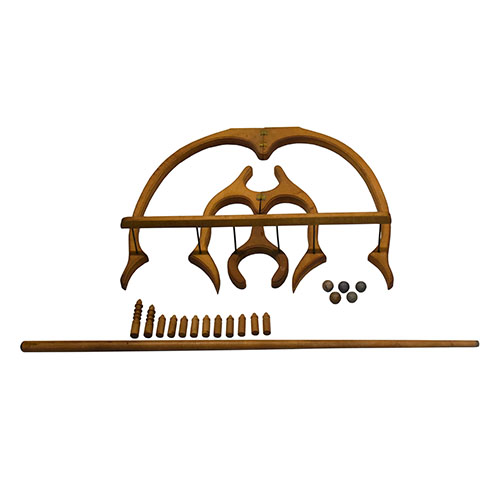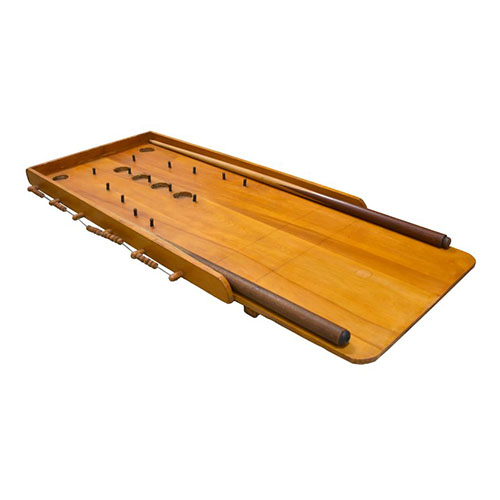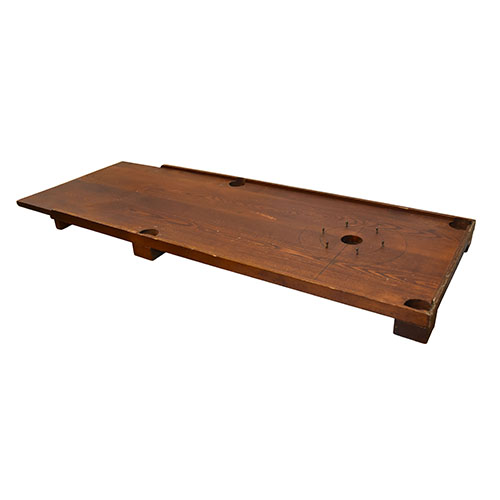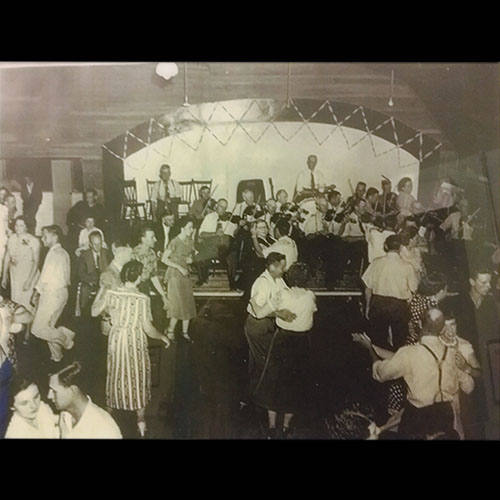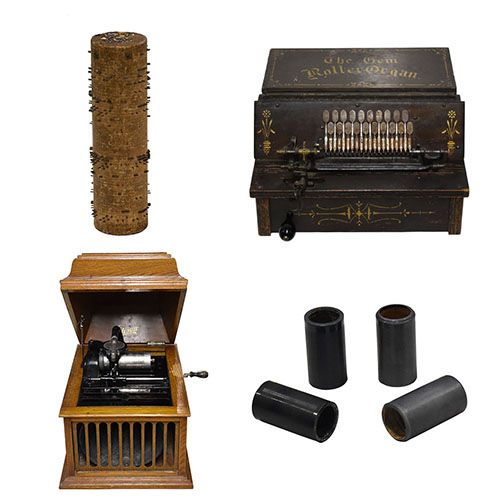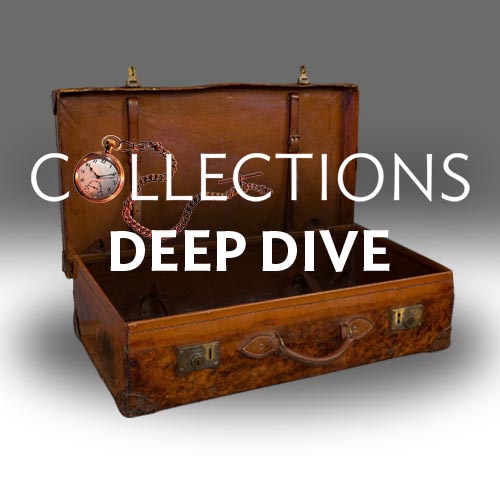Within the collection of the BCM&CC are three table-top games which are best described as bagatelle and have similar elements including games boards, game tokens, balls, and cues. Though described as bagatelle, they do differ, showing the variety one game could have.
The exact origins of the game known as Bagatelle aren’t wholly clear, however it is thought to have arisen during the reign of Louis XIV (1636-1715) at a place known as Castle Bagatelle, which belonged to his younger brother Arthur. Similar to a billiard table, his bagatelle table was described as a “half-width” billiards table which featured holes/pockets within the table surface rather than along the sides. By the 1800s the game had become popular in England and other European countries.
According to an article published by the National Museum of American History, it’s likely French troops introduced the game to Americans during the Revolutionary War (1770s) and variations arose in the United States while others arose in England. By 1819, bagatelle was described as “a popular game played on a table 7’ long and 21” wide, in which nine balls are shot into various holes surrounded by wooden pegs, affixed to the table”. This style of bagatelle was changed in 1871, when the early versions of modern pinball were invented and patented.
A smaller version of bagatelle also arose during the 1800s, which was known as parlour bagatelle. This is a game board, that includes the pegs and holes, as well as small balls and a small cue. Other 1800s versions include wooden pins that are not affixed to the board, with rules stating penalties are incurred if a player knocks one down. Other games though to have been inspired from bagatelle include skittles and pachinko.
In the Collection
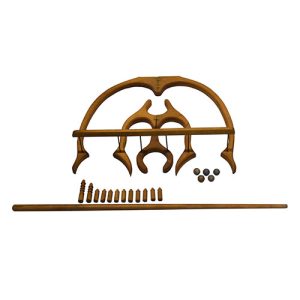 The bagatelle inspired game seen here is one of two identical games within the collection. Both games feature foldable brackets that create an arched game surface, chess inspired game pieces, game balls and a cue. Though there are no game rules with the games, it is thought the object would be to knock down the game pieces placed throughout the course, with the taller ones being worth more points than the smaller ones. This one was used by Allen Nelson (1868-1952), originally of Bruce Township. The other was played by Annie Coral McIvor (1897-1976) as a child living in Saugeen Township.
The bagatelle inspired game seen here is one of two identical games within the collection. Both games feature foldable brackets that create an arched game surface, chess inspired game pieces, game balls and a cue. Though there are no game rules with the games, it is thought the object would be to knock down the game pieces placed throughout the course, with the taller ones being worth more points than the smaller ones. This one was used by Allen Nelson (1868-1952), originally of Bruce Township. The other was played by Annie Coral McIvor (1897-1976) as a child living in Saugeen Township.
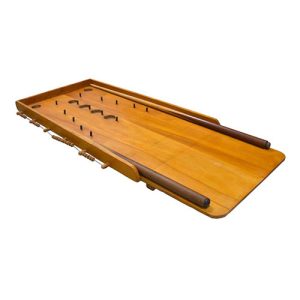 This bagatelle inspired game was made by Joseph Shelton of Kincardine, who made it for his family during the 1950s. This board features holes that balls or game tokens like checker pieces could be put into, the classic affixed metal pegs and cues to shoot with. Near each hole is written a number indicating the score a player receives for getting the game token into it. There are small score keeping slides on the sides of the board.
This bagatelle inspired game was made by Joseph Shelton of Kincardine, who made it for his family during the 1950s. This board features holes that balls or game tokens like checker pieces could be put into, the classic affixed metal pegs and cues to shoot with. Near each hole is written a number indicating the score a player receives for getting the game token into it. There are small score keeping slides on the sides of the board.
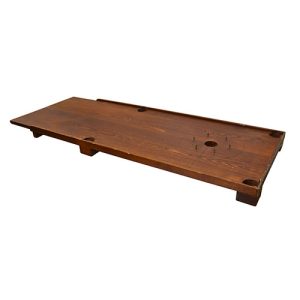 This game board is thought to have been used for a bagatelle-like game. It features a slender game surface, and pockets for balls or game tokens. The numeral “2” can be seen with two of the holes, suggesting the score received. The board also features affixed pegs around the centre hole. It belonged to Robert McKenzie Aitken of Culross Township as a child and dates between 1910 and 1920.
This game board is thought to have been used for a bagatelle-like game. It features a slender game surface, and pockets for balls or game tokens. The numeral “2” can be seen with two of the holes, suggesting the score received. The board also features affixed pegs around the centre hole. It belonged to Robert McKenzie Aitken of Culross Township as a child and dates between 1910 and 1920.
Sources:
“The bagatelle wizard instead of the pinball wizard” https://americanhistory.si.edu/blog/2012/10/the-bagatelle-wizard-instead-of-the-pinball-wizard.html#:~:text=The%20game’s%20origins%20are%20fuzzy,to%20house%20his%20gaming%20tables.
https://www.tradgames.org.uk/games/Bagatelle.htm
Elliot Avedon Virtual Museum of Games https://healthy.uwaterloo.ca/museum/VirtualExhibits/bagatel/btable.html

